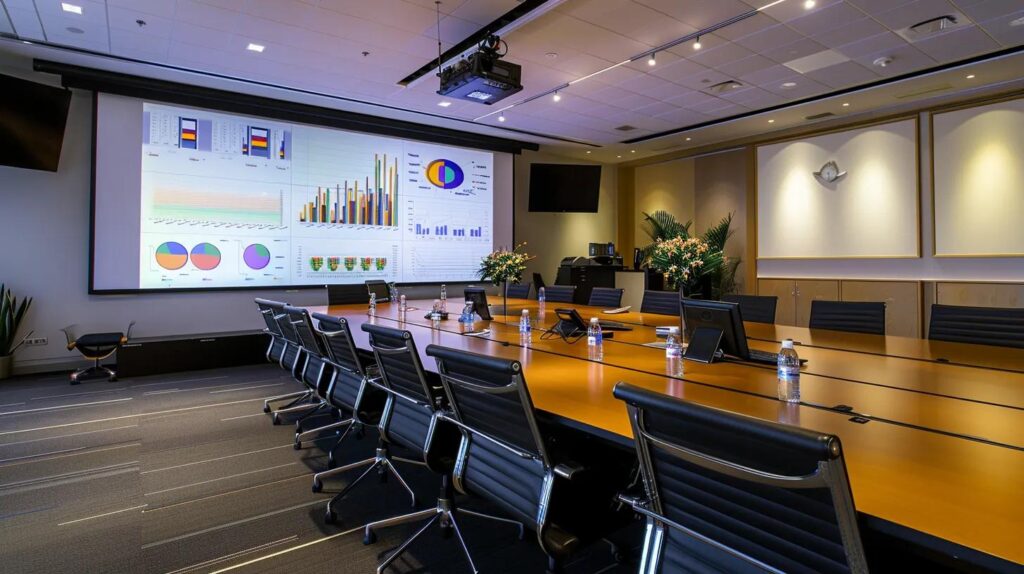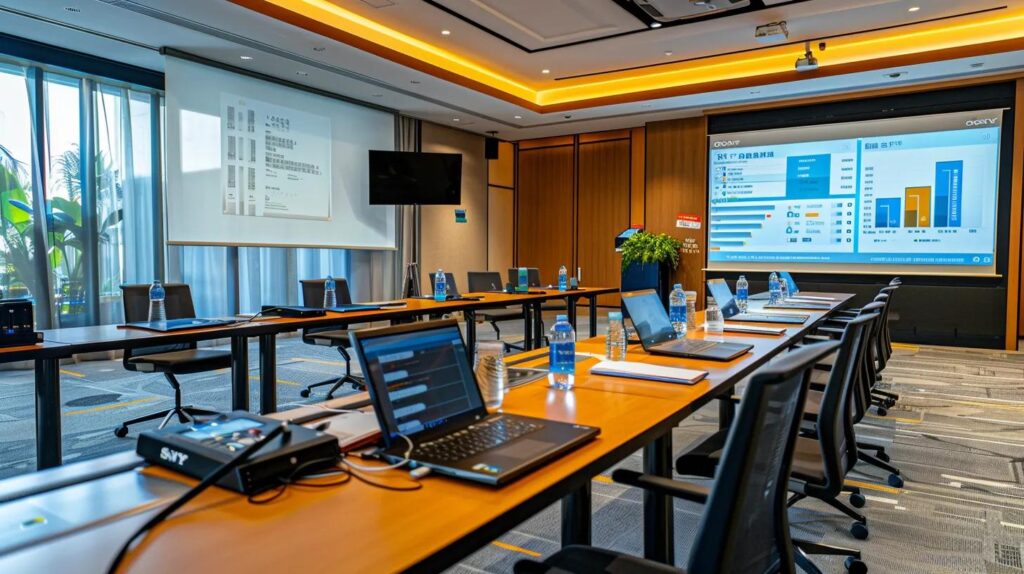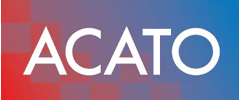Creating the Perfect ISO 27001 Risk Assessment Report

Crafting the Perfect ISO 27001 Risk Assessment Report
In today’s information security landscape, an effective ISO 27001 risk assessment report is fundamental for organizations aiming to demonstrate due diligence and a proactive security posture. Often, this involves using a certification audit to ensure that every security measure is thoroughly vetted against established controls. This article outlines the purpose, core elements, and practical techniques to develop a comprehensive report that meets ISO 27001 standards. It details methodology selection, risk analysis, and the incorporation of risk treatment plans while ensuring that reports support decision making and regulatory compliance. The discussion guides organizations in tailoring reports to their unique operating contexts and emphasizes continuous improvement.
Key Takeaways for an Effective ISO 27001 Risk Assessment Report
- The report serves as a critical tool for aligning security practices with ISO 27001 requirements and communicating risk posture.
- Core elements include risk methodology, asset valuation, threat identification, and control referencing, ensuring the report’s accuracy.
- Effective use of standardized templates and regularly updated documentation strengthens overall information security management.
Understanding the Purpose of Your ISO 27001 Risk Assessment Report

This section explains that the primary goal of an ISO 27001 risk assessment report is to clearly align the organization’s security practices with international standards. It details how the report serves to communicate the risk posture to stakeholders, enabling informed decision making for risk treatment. By demonstrating due diligence in information security management, the report legitimizes the organization’s proactive approach and commitment to protecting critical assets. Additionally, it fosters continuous improvement of the Information Security Management System (ISMS) by identifying areas for further enhancement and ensuring that risk treatment measures are both effective and up-to-date.
Aligning Your Report With ISO 27001 Requirements
Aligning a report with ISO 27001 requirements is a crucial step for organizations seeking to demonstrate their commitment to information security management. ISO 27001 is the international standard that outlines the specifications for an effective information security management system (ISMS). This standard not only helps organizations to protect their sensitive data but also builds trust among clients and stakeholders. To ensure compliance, it is vital for organizations to understand the key components of ISO 27001, such as risk assessment, context of the organization, leadership engagement, and continual improvement, as they prepare their reports.
To effectively align a report with these ISO 27001 requirements, professionals should first conduct a comprehensive analysis to identify discrepancies between current practices and the ISO standards. This involves evaluating existing policies, procedures, and controls related to information security. Once the gaps are identified, the organization can develop an action plan detailing how to address these deficiencies. It is also beneficial to adopt a structured reporting framework that incorporates elements of the ISO standard, such as the establishment of clear objectives and performance indicators. By systematically addressing each requirement, organizations not only enhance their compliance but also foster a culture of security awareness that can lead to improved risk management and operational efficiency.
The report must reference specific clauses and controls from the ISO 27001 standard to prove compliance. It should illustrate clear connections between business processes and the security controls implemented.
Communicating Risk Posture to Stakeholders
An effective report translates technical risk assessments into business language, making it accessible for all levels of management and external auditors.
An effective report serves as a crucial bridge between complex technical risk assessments and the broader business context that upper management and external auditors operate within. By translating intricate data and technical jargon into clear, concise language, such reports enable stakeholders at all levels to comprehend the implications of risks without requiring specialized knowledge. This accessibility is vital, as decision-makers must evaluate numerous factors, including financial repercussions, organizational impact, and strategic alignment, when addressing potential risks. The ability to digest these assessments into a risk mitigation discussion empowers management to make informed decisions that align with the organization’s goals while effectively addressing potential threats.
Furthermore, an effective report promotes transparency and facilitates communication between departments and with external auditors. By utilizing straightforward terminology and relevant examples, the report fosters a shared understanding of risk among all stakeholders, enhancing collaboration in risk management strategies. This unification of language ensures everyone, from the technical team to senior executives, appreciates the significance of the identified risks. Consequently, organizations can implement more robust governance practices and operational efficiencies, all while building trust with external parties who rely on these evaluations to gauge the organization’s risk posture. In a rapidly evolving business landscape, the capacity to translate technical assessments into actionable business language is increasingly recognized as a key competency for organizations aiming to thrive amidst uncertainty.
Supporting Informed Decision Making for Risk Treatment
By quantifying risks and proposing prioritized treatment actions, the report enables leadership to allocate resources wisely and address critical vulnerabilities. ISO 27001 checklists
In today’s complex business landscape, organizations face an array of potential risks that can threaten their operational integrity. By quantifying these risks and proposing prioritized treatment actions, the report serves as an essential tool for leadership. It transforms nebulous threats into clear, actionable insights, allowing decision-makers to identify which vulnerabilities require immediate attention and which can be managed over the longer term. This structured approach not only enhances clarity in understanding the risk landscape but also facilitates informed discussions among stakeholders regarding risk appetite.
Moreover, the ability to prioritize risks means that resources—be it time, budget, or personnel—can be strategically deployed to areas that pose the highest threat to the organization. This proactive stance enables leadership to implement treatment actions that effectively mitigate vulnerabilities before they escalate into significant issues. By aligning resources with the most critical risk areas, organizations can strengthen their overall resilience and safeguard their operational objectives, ultimately leading to enhanced performance and sustained growth in a competitive market.
Demonstrating Due Diligence in Information Security Management
Documenting detailed risk analysis provides evidence that the organization is continually assessing and improving its security posture.
Documenting detailed risk analysis is a crucial practice for organizations striving to enhance their resilience. This process involves systematically identifying, evaluating, and prioritizing risks associated with various assets, operations, and transactions. By maintaining comprehensive records of risk assessments, organizations can provide clear evidence of their commitment to ongoing security improvements. Such documentation not only showcases the methodologies employed during the risk assessment but also highlights how identified vulnerabilities are addressed, thereby establishing accountability and fostering transparency within the organization.
Moreover, the benefits of maintaining an up-to-date risk analysis extend beyond immediate compliance and documentation. It creates a feedback loop where organizations can analyze the effectiveness of their security measures over time. This continuous assessment enables organizations to adapt to emerging threats and evolving business needs. As risks change, the documented analyses can guide strategic decision-making, ensuring that resource allocation aligns with the most pressing security challenges. Ultimately, this proactive approach to risk management not only mitigates potential threats but also cultivates a culture of security awareness within the organization, reinforcing a robust security posture that is vital in today’s ever-evolving threat landscape.
Facilitating Continuous Improvement of Your ISMS
Regular updates and reviews of the report support ongoing enhancements to security strategies and processes. Regular updates and reviews of security reports play a crucial role in strengthening an organization’s security strategies and processes. By consistently evaluating and refreshing the information contained within these reports, organizations can identify emerging threats and vulnerabilities that may not have been previously considered. This proactive approach empowers security teams to refine and adapt their strategies in real-time, ensuring that the organization remains one step ahead of potential cyberattacks. Furthermore, ongoing reviews facilitate the incorporation of lessons learned from recent incidents, fostering a culture of continuous improvement and resilience.
Additionally, engaging in regular updates fosters better communication and collaboration among team members. As security landscapes evolve, different departments may notice new risks from their unique perspectives. By reviewing reports together, organizations can encourage cross-functional dialogue, allowing for a more comprehensive understanding of the overall security posture. These discussions often lead to innovative solutions and enhancements that might not have surfaced in isolated evaluations. Ultimately, the commitment to regularly updating and reviewing security reports not only bolsters an organization’s defenses but also cultivates a proactive mindset that keeps security at the forefront of operational priorities.
Core Elements of an Effective ISO 27001 Risk Assessment Report

At its core, the ISO 27001 risk assessment report must capture every significant element of the risk management process. This includes documenting the chosen risk assessment methodology, clearly identifying information assets and their values, and detailing identified threats and vulnerabilities. Presenting the assessed risk levels and likelihood ensures that stakeholders understand the urgency and potential impact of each risk. Furthermore, referencing applicable controls from Annex A reinforces the compliance narrative and supports the effectiveness of the security measures the organization has adopted.
Documenting Your Chosen Risk Assessment Methodology
A structured methodology is essential to provide consistency and repeatability in risk assessments. The report should explain whether qualitative, quantitative, or are applied.
Clearly Identifying Information Assets and Their Values
Listing each asset with its value helps quantify potential losses and justify the need for specific security controls.
Detailing Identified Threats and Vulnerabilities
It is crucial to clearly articulate all potential threats and existing vulnerabilities that may compromise asset integrity.
Presenting the Assessed Risk Levels and Likelihood
Conveying calculated risk levels helps prioritize responses and informs management about the urgency of mitigation.
Referencing Applicable Controls From Annex A
Cross-referencing ISO 27001 Annex A controls assures that all necessary security measures are considered during the risk assessment.
Utilizing an ISO 27001 Risk Assessment Report Template for Consistency

Using a standardized template is key to ensuring consistency and ease of review over time. A suitable ISO 27001 risk assessment report template ensures that all mandated sections are covered, minimizing the risk of oversight. Organizations benefit from a template that can be customized to fit their unique context without sacrificing compliance. Moreover, standardized formatting makes it easier for auditors to review the report. However, common pitfalls exist when templates are applied without customization; generic risk descriptions and vague language can undermine the report’s utility and clarity. It is essential to select, customize, and regularly refine a template to maintain its relevance.
Selecting a Suitable Iso 27001 Risk Assessment Report Template
Choose templates that include all necessary sections and are adaptable to organizational requirements.
Customizing a Template to Fit Your Organization's Context
Tailor risk descriptions and asset classifications to reflect your specific operational environment.
Ensuring Your Template Includes All Mandated Sections
Verification against ISO 27001 requirements helps to ensure no essential detail is overlooked.
Benefits of Using a Standardized Iso 27001 Risk Assessment Report Format
Consistency simplifies audits, facilitates management reviews, and streamlines risk communication.
Common Pitfalls When Using a Generic Iso 27001 Risk Assessment Report Template
Avoid overly generic language and ensure that the template is thoroughly customized to your operational context.
Step-by-Step Guide to Compiling Your ISO 27001 Risk Assessment Report

A step-by-step guide allows organizations to systematically compile their risk assessment report. Begin by gathering and consolidating risk assessment data from various departments. The report must then be structured for clarity and readability, employing clearly written risk descriptions and actionable recommendations. Visual aids, such as risk matrices, enhance comprehension and facilitate discussions during management reviews. Finally, a rigorous review process ensures that all information is accurate, complete, and aligned with ISO 27001 standards. Following this process helps organizations produce robust reports that support both compliance and continuous improvement.
Gathering and Consolidating Risk Assessment Data
Collect data from internal audits, vulnerability assessments, and threat intelligence sources for a comprehensive evaluation.
Structuring the Report for Clarity and Readability
Organize sections logically, ensuring that risk descriptions and proposed treatments are concise and comprehensible.
Writing Concise and Actionable Risk Descriptions
Detailed narratives must concisely capture risks and suggest specific mitigation actions. iso 9001 process
Incorporating Visual Aids Such as Risk Matrices
Visual representations help in summarizing risk levels and prioritizing treatment options effectively.
Reviewing and Validating Report Accuracy
Involve cross-functional teams to validate data and verify that all assertions meet ISO 27001 criteria.
Integrating Risk Treatment Plans Into Your ISO 27001 Report

Successful integration of risk treatment plans is essential to transition from assessment to action. This section details how organizations can outline proposed risk treatment options and justify the selection of specific controls. Assigning clear responsibilities and timelines ensures accountability, and documenting residual risk levels post-treatment provides a clear picture of ongoing risk. Additionally, linking the report to the identified risk items helps in tracking the effectiveness of implemented controls and streamlines future audits.
Outlining Proposed Risk Treatment Options
Clearly define treatment strategies such as risk acceptance, mitigation, transfer, or avoidance.
Justifying the Selection of Specific Controls
Tie control selections to identified risks and expected reductions in risk levels.
Assigning Responsibilities and Timelines for Treatment Actions
Ensure that responsibilities are clearly allocated and deadlines are set for review and execution.
Documenting Residual Risk Levels Post-Treatment
Update risk ratings post-treatment to reflect remaining vulnerabilities and residual risk.
Linking the Report to the Statement of Applicability
Integrate this report with the Statement of Applicability for a comprehensive view of security measures.
Presenting Risk Assessment Findings to Management

Presenting findings effectively is critical to securing management buy-in. The report should summarize key risks, their potential business impact, and areas requiring urgent attention. An executive summary that highlights resource allocation recommendations further supports strategic decision making. By preparing a clear and concise summary tailored for management, the report becomes a vital tool for driving organizational improvements in risk management.
Summarizing Key Risks and Their Potential Impact
Condense the most critical vulnerabilities and their business impacts in a succinct summary.
Highlighting Areas Requiring Urgent Attention
Identify high-priority risks that necessitate immediate mitigation efforts.
Recommending Resource Allocation for Risk Mitigation
Propose investment in specific controls or security initiatives based on risk levels.
Preparing an Executive Summary for Your ISO 27001 Risk Report
Craft a brief executive summary that encapsulates the report’s main findings and strategic recommendations.
Maintaining and Updating Your ISO 27001 Risk Assessment Report

Regular updates are vital to keep the risk assessment report relevant. Organizations should establish a schedule for recurring reviews to accommodate changes in processes or the threat landscape. Updating the report following significant changes in technology or incidents ensures that it remains a current and effective tool for decision making. Moreover, incorporating lessons learned from security incidents and maintaining strict version control fortifies the documentation process and supports continuous improvement of the ISMS.
Establishing a Schedule for Regular Report Reviews
Set periodic review intervals to update risk data and treatment statuses.
Updating the Report Following Significant Changes
Make adjustments promptly after major technological or organizational changes occur.
Incorporating Lessons Learned From Security Incidents
Utilize incident post-mortems to refine risk assessments and update controls.
Version Control for Your ISO 27001 Risk Assessment Documentation
Implement robust version control practices to track modifications and ensure historical accuracy.
Common Mistakes to Avoid in Your ISO 27001 Risk Assessment Reporting

Avoiding common pitfalls in risk reporting is crucial for accuracy and credibility. Vague or ambiguous risk statements, inconsistent application of risk scales, and the failure to link risks to business objectives can undermine the report’s effectiveness. Overlooking asset interdependencies and providing inadequate justification for risk acceptance further reduce the report’s validity. Organizations must strive for clarity, consistency, and precision to ensure that the report is both informative and productive.
Vague or Ambiguous Risk Statements
Be specific and precise when defining each risk to avoid misinterpretation.
Inconsistent Application of Risk Scales
Standardize risk scales across the report to maintain consistency in evaluations.
Failure to Link Risks to Business Objectives
Ensure that each risk is correlated with strategic business outcomes to justify mitigation investments.
Overlooking Asset Interdependencies
Consider how risks affect interconnected assets to provide a holistic view of vulnerabilities.
Inadequate Justification for Risk Acceptance
Provide clear rationale when accepting residual risks to support decision-making processes.
What Auditors Look for in an ISO 27001 Risk Assessment Report

Auditors evaluate several key aspects when reviewing an ISO 27001 risk assessment report. They look for completeness and accuracy of information, evidence of a systematic risk assessment process, and traceability between identified risks, assessments, and treatments. Additionally, management approval and clear alignment with the overall ISMS documentation are critical. Meeting these criteria not only supports the certification process but also builds confidence in the organization’s commitment to continuous security improvement.
Completeness and Accuracy of Information
Reports must be thorough, covering every aspect of the risk landscape without omissions.
Evidence of a Systematic Risk Assessment Process
Document systematic procedures to demonstrate that the risk evaluation is comprehensive. ISO 27001 process
Traceability Between Identified Risks, Assessments, and Treatments
Ensure that each risk is traceable through the assessment process to its corresponding mitigation strategy.
Management Approval and Endorsement of the Report
Obtain formal approval from top management to reinforce the report’s significance and credibility.
Alignment With the Overall ISMS Documentation
The report should seamlessly integrate with existing security management protocols and overall ISMS documentation.
Leveraging Your ISO 27001 Risk Assessment Report for Ongoing Security Improvement

An effective risk assessment report is not a one-off document but a dynamic tool for ongoing security improvement. By analyzing report data to identify trends and patterns, organizations can proactively adjust their security measures. The report also serves as a foundation for security awareness training programs and informs management review meetings, driving proactive risk management activities. Additionally, showcasing conformance with a standardized report template further strengthens the organization’s resilience and future audit readiness.
Using Report Data to Identify Trends and Patterns
Analyze historical data from the report to identify recurring security issues and emerging threats.
Informing Security Awareness and Training Programs
Utilize report insights to tailor training sessions that address current vulnerabilities.
Providing Input for Management Review Meetings
Leverage report findings to guide resource allocation and strategic risk mitigation discussions.
Driving Proactive Risk Management Activities
Regularly update and refine risk management strategies based on evolving risk assessments.
Showcasing Conformance With Your Iso 27001 Risk Assessment Report Template
Demonstrate adherence to international standards by consistently applying a standardized reporting format.
Final Thoughts
In summary, crafting an ISO 27001 risk assessment report is essential for ensuring a robust security posture and regulatory compliance. The report functions not only as documentation for audits but also as a strategic tool for decision making, resource allocation, and continuous improvement of the ISMS. By following a methodical approach—from data gathering to regular updates—organizations can address vulnerabilities effectively and stay ahead of emerging threats. This proactive approach ultimately supports a secure, resilient business environment.
Frequently Asked Questions
Q: What is the primary purpose of an ISO 27001 risk assessment report? A: It aligns security practices with international standards, communicates the organization’s risk posture to stakeholders, and supports informed risk treatment decisions.
Q: How should an organization customize a report template? A: Customization should reflect the organization’s unique context, include specific asset valuations, detailed threat assessments, and justify selected risk control measures.
Q: Why is it important to review the report regularly? A: Regular reviews ensure the report remains current with technological changes and evolving security threats, allowing for continuous improvement in the ISMS.
Q: What common mistakes should be avoided in risk assessment reporting? A: Avoid vague risk statements, inconsistent risk scales, and failing to connect risks to business objectives, as these can undermine the report’s credibility. For more information on this topic, consider information security guidelines.
Q: How do auditors evaluate these reports? A: Auditors assess the report for completeness, accuracy, systematic processes, traceability of risks to treatments, and its alignment with overall ISMS documentation.
